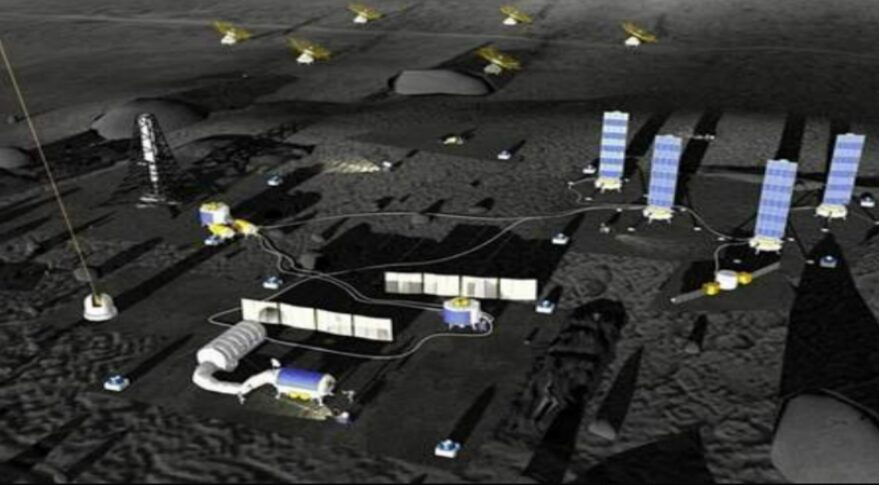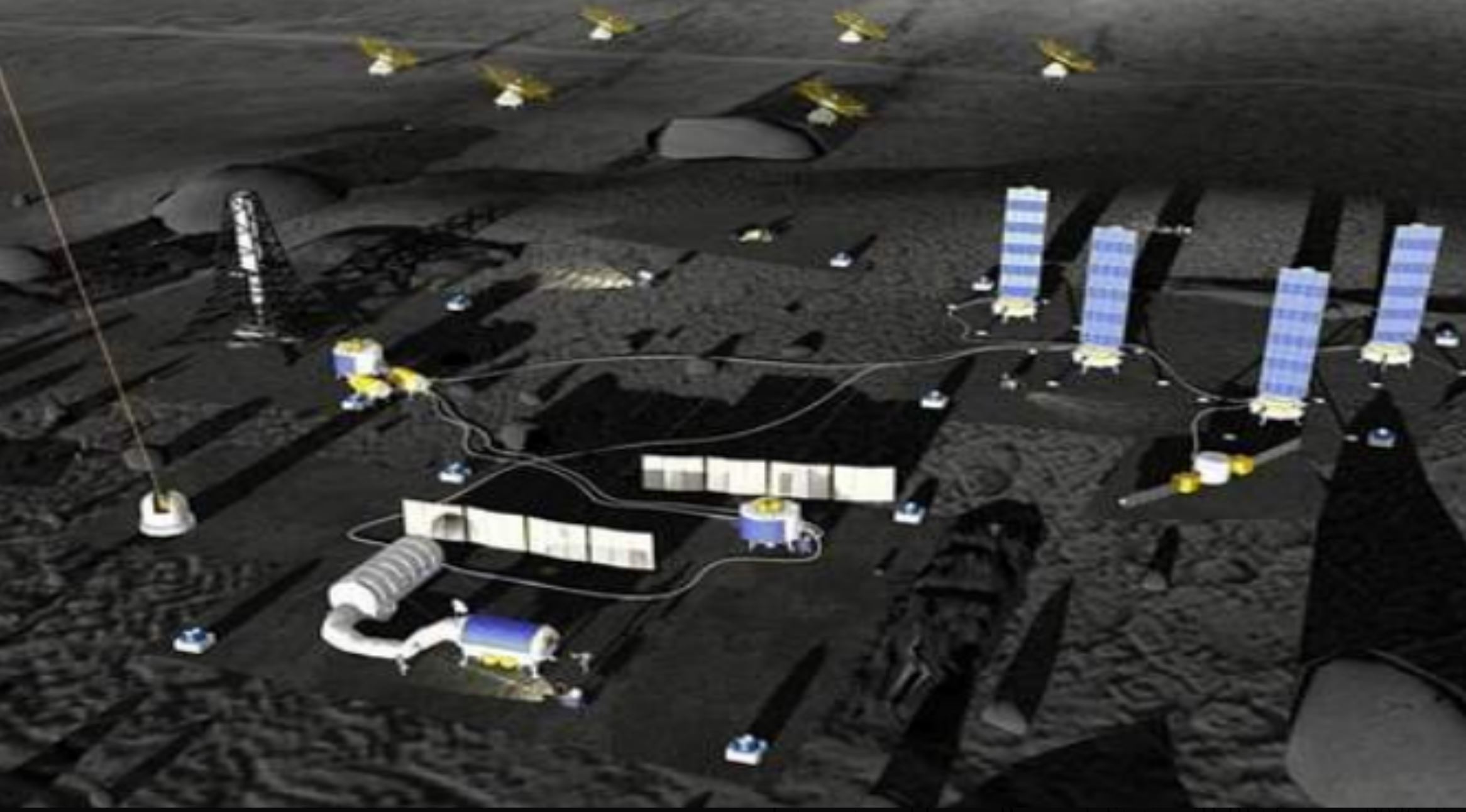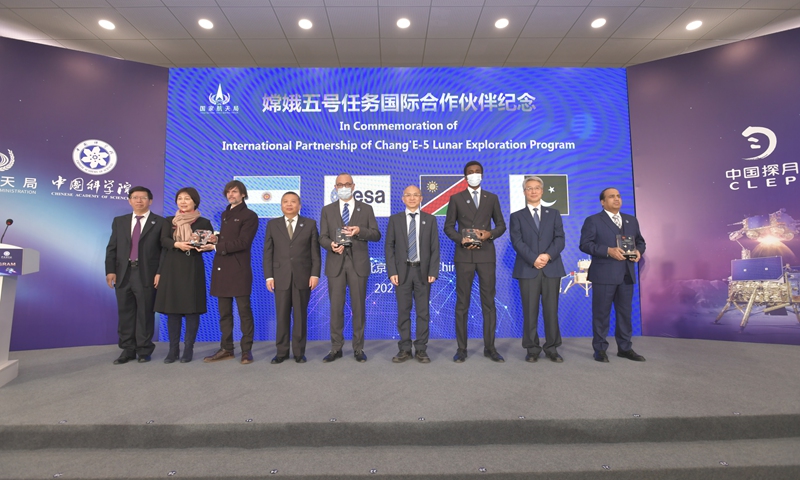Russia, China to sign agreement on international lunar research station, Russia opts for lunar project with China over continued cooperation with ISS partners
by Andrew Jones — February 17, 2021
An artist conception of the International Lunar Research Station (ILRS), post-2030. Credit: CNSA/CLEP
Russia opts for lunar project with China over continued cooperation with ISS partners beyond LEO
Roscosmos press office said the official announcement of the plans to create the International Lunar Research Station is planned to coincide with one of the upcoming international events. St. Petersburg is due to host the Global Space Exploration Conference 2021 in June.
Roscosmos did not provide requested further details on the makeup of, nor contributions to the International Lunar Research Station.
The ILRS is understood to be a Chinese-developed vision for a robotic base at the lunar south pole. The first steps will be the upcoming Chang’e-,6, -7 and -8 missions and international missions such as Russia’s Luna 27. In the early 2030s an expanded ILRS will involve long-term robotic and potentially short-term crewed missions. A long-term human presence at the lunar south pole is the goal for 2036-2045.
The project, at this early stage, would appear to consist of Chinese, Russian and potentially other nations contributing their own, discrete spacecraft. This would be in contrast to a more complex, integrated program such as the International Space Station.
ILRS objectives include “construction and operation of human[ity]’s first sharing platform in the lunar south pole, supporting long-term, large-scale scientific exploration, technical experiments and development and utilization of lunar resources’, according to a 2020 presentation to the Scientific and Technical Subcommittee of the Committee on the Peaceful Uses of Outer Space (COPUOS) by the Lunar Exploration and Space Engineering Center under the China National Space Administration (CNSA).
From Gateway to China-Russia lunar station
The development follows Russia opting not to join eight nations, including the U.S., in signing on to the Artemis Accords last October. The Accords are a set of principles and norms for those who want to participate in the NASA-led Artemis lunar exploration program.Bleddyn Bowen, a lecturer in international relations at the University of Leicester in the United Kingdom, told SpaceNews that the development is not such a surprise, given that Russia has always been lukewarm to the Lunar Gateway, part of the Artemis program, and this will have been factored in. However the project will still suffer from the loss of Russian expertise.
Bowen sees the move from Russia as an ISS partner to working more closely with China in lunar exploration rather than ISS partners is part of wider space-related and geopolitical shifts, particularly since the outbreak of the Ukranian conflict.
“This MoU fits the larger trend, which is Russia moving into a closer orbit with China,” says Bowen, adding that this more formal agreement builds on existing cooperation in material science, data sharing, purchase agreements and lunar exploration.
Bowen cautions however that this is “just a memorandum of understanding, so we’ll have to wait and what, if anything, comes from this”.
Zhang Ming, a researcher on international security and space issues at the Shanghai Academy of Social Sciences, told SpaceNews both China and Russia, who have long cooperated in space, have difficulties in working with the U.S. for different reasons. Zhang notes that Russia had expressed concerns that Artemis was too “U.S.-centric” and she would expect “more and more space and lunar cooperation between Russia and China” if the “United State continues its space policies and practices without any change.”
“The U.S. advances its space agenda aggressively and sometimes unilaterally in recent years despite the concerns of the rest [of the] world, which made China and Russia very worried. The mistrust and skepticism towards U.S. motives will promote China and Russia to further their space cooperation,” Zhang said.
Roscosmos chief Dmitry Rogozin last year told Russian media China and Russia had agreed they will “probably” build a moon research base together, following talks with Director of the China National Space Administration Zhang Kejian.
Brian Weeden of the Secure World Foundation also believes the split has been coming for sometime, citing the Ukraine invasion and 2016 election interference. “I think we’re at a much different US-Russia space relationship than we had for the past few decades.”
“I don’t think it’s going to have a serious impact on Artemis. Russia indeed has some experience in robotic lunar landers but no human spaceflight experience and their space sector has been declining for some time,” says Weeden. “The space partnership with Russia in the ISS was driven more by national security and foreign policy reasons than a need to have Russian expertise. It’s useful, but not critical.”
The European Space Agency has also been involved in discussions, while recently having signed an MoU with NASA on the Gateway. “At ESA we are following the Chinese lunar exploration plans very closely in order to see where our respective programmatic interest could meet, primarily the CE-6, -7 and -8 missions but also the ILRS initiative”, Karl Bergquist, ESA’s international relations administrator, told SpaceNews last year.
From Chang’e to ILRS
The ILRS is an evolutionary, expanded stage of Chinese lunar exploration following the approval of a first set of missions in the early 2000s. China has since launched two lunar orbiters, a pair of lander and rover missions and, in late 2020, the complex Chang’e-5 lunar sample return mission.Chang’e-6, a polar sample return mission, and the multi-spacecraft Chang’e-7 are scheduled for around 2023-2024. The later Chang’e-8 mission will be designed for in-situ resource utilization and 3D-printing technology tests, as well as life science related to potential long-term stays on the moon. These missions will form the robotic basis of the ILRS before expansion into more long term base.
China is also developing capabilities for deep space human spaceflight. In May 2020 China tested a new generation spacecraft and is also developing a super-heavy-lift launcher for space infrastructure and lunar missions. A new, three-core launcher for potential crewed lunar missions is also in development.

Russia, China to sign agreement on international lunar research station
Russia, China to sign agreement on international lunar research station
 spacenews.com
spacenews.com


